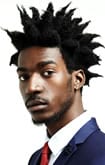If you’ve grown tired of the endless sponsored posts in your Instagram feed, of the glut of attractive young white people hawking brands they’ve never actually worn on YouTube, then we have bad news. Influencers are only getting started.
Maybe that comes as a surprise. People have been confidently predicting the death of the influencer ever since they first appeared pouting out of your phone screen, citing things like fake followers or a lack of authenticity. It hasn’t happened. They’re smouldering on, finding new platforms, new ways of speaking to their audiences and new ways to carve up big brands’ marketing budgets.
“This is just the beginning,” says Brittany Hennessy, co-founder of Carbon and the author of Influencer: Building Your Personal Brand In The Age Of Social Media. “[Influencer marketing is] essentially the digital version of word of mouth.” As new social platforms muscle out old media as the place people go for inspiration and information, brands are looking for new ways to get in front of customers. “Influencers are only going to get better at creating engaging content and brands are going to spend more money than ever before.”
That influencers have risen as print has collapsed is no coincidence. Brands have always needed a way to expose you, the consumer, to their clothes. In the days when glossy magazines were the only way to keep abreast of trends, that involved a delicate dance in which brands paid for ad space, and fashion editors prioritised their clothes in shoots. Now, they pay influencers to wear their clothes and post the pictures on Instagram. A much neater relationship on both sides of the curtain.
Brands also like influencers because it’s easier to see where their money goes. “They typically want their marketing to result in sales,” says Amy Odell, former editor of Cosmopolitan.com and a columnist at Business of Fashion. It’s always been tough to tell if an ad in the front of a magazine led to a sale in a shop. “But it’s a lot easier to track influencer sales because they can use [trackable links] and stuff like that.”
It works, too. According to research done on major search engine news outlets from social analytics company Klear, 96 per cent of US fashion brands have an influencer marketing programme and the sector has helped turbocharge growth for the likes of watch brand Daniel Wellington and a glut of fast fashion labels, from Boohoo to I Saw It First, which launch new collections through hook-ups with the insta-famous.

Though there are a handful of big ticket male influencers, the market as a whole is low on Y chromosomes. According to Klear, more than 80 per cent of the Instagram posts tagged with #ad in 2017 were posted by women. (And, like everything in fashion, the most influential are largely young, thin and white). The number of sponsored posts also grew by 198 per cent from 2016 to 2017, as smaller brands followed where the big boys led.
This could also partly be attributed to new rules from the Federal Trade Commission (FTC), which demanded new levels of transparency. Since September 2017, the FTC has required all paid-for posts to be clearly labelled (most commonly with #ad or #sponsored). At the same time, Instagram introduced its ‘Paid Partnership’ feature, which clearly flags any commercial hook-ups.
Some believed that this would hurt the influencer market – part of its appeal for brands, at least at first, was that paid-for posts were often indistinguishable from an influencer’s day-to-day content. But it seems the opposite may actually be true. “Their audiences are aware [that posts are paid for],” says Odell. “People want the transparency but I don’t think they mind that it’s happening, because they want to consume this content and they can’t have this content if the person’s not getting those sponsorships.” It’s another big shift from the way old media worked, and yet more reason for brands to double-down on their influencer budgets.
Though there are a handful of big ticket male influencers, the market as a whole is low on Y chromosomes. According to Klear, more than 80 per cent of the Instagram posts tagged with #ad in 2017 were posted by women. (And, like everything in fashion, the most influential are largely young, thin and white). The number of sponsored posts also grew by 198 per cent from 2016 to 2017, as smaller brands followed where the big boys led. This could also partly be attributed to new rules from the Federal Trade Commission (FTC), which demanded new levels of transparency. Since September 2017, the FTC has required all paid-for posts to be clearly labelled (most commonly with #ad or #sponsored). At the same time, Instagram introduced its ‘Paid Partnership’ feature, which clearly flags any commercial hook-ups. Some believed that this would hurt the influencer market – part of its appeal for brands, at least at first, was that paid-for posts were often indistinguishable from an influencer’s day-to-day content. But it seems the opposite may actually be true. “Their audiences are aware [that posts are paid for],” says Odell. “People want the transparency but I don’t think they mind that it’s happening, because they want to consume this content and they can’t have this content if the person’s not getting those sponsorships.” It’s another big shift from the way old media worked, and yet more reason for brands to double-down on their influencer budgets.

Some not-quite-influencers even go so far as to fake partnerships in order to boost their profiles. “Ordinary people are claiming on Instagram to have brand deals, with established companies, that don’t exist,” says Chris Stokel-Walker, a journalist and author of an upcoming book on YouTube. “You can’t trust whether an influencer has or hasn’t got a relationship with a brand – and if they do, you can’t tell whether they’re shilling it because they like it, or because the money was good.”
These fakes aside, influencers are most valuable to brands because they come with a halo of authenticity, even when they’re being paid to promote something. No one thinks George Clooney actually drinks Nespresso. But perhaps this person making money on Instagram, who seems just like you, is as big a fan of some Scandi watch brand as their photos suggest.
As Stokel-Walker puts it, what separates an ‘influencer’ from just someone with lots of followers is a “personal connection”. Because you get a view into their (supposedly) real life, you feel closer to an influencer than you do a traditional celebrity. “It seems like influencers are your friends. And you’re more likely to buy products on the recommendations of your friends.”
All of which means that, in 2019, you can expect influencers to become even more prevalent. Especially since brands are giving less of their cash to the big names, instead choosing to spread it among multiple micro-influencers (those with followers in the tens of thousands, rather than the millions). “Some can sell more product than a major star,” says Odell, singling out Arielle Charnas, who leveraged her Something Navy blog into a best-selling collection with Nordstrom. “She’s not Beyoncé, but she really sells product.”
Squaring the circle is the rise of analytics platforms. They take the murky world of follower counts, which were often juiced with fake profiles, and turn it into easily digestible data on which influencers have the most engaged audiences, so that brands can quickly figure out where their money is best spent. That confidence encourages brands to invest more cash, which means more money to support an even bigger pool of influencers.
“As the number of people blocking ads continues to increase, brands need a direct line to their target consumer,” says Hennessy. “Influencers are a way to reach someone who might genuinely be interested in purchasing a brand’s product or service in a way that resonates with them and doesn’t scream ‘advertisement’.”

All of which means that your social media is about to get even more cluttered with attractive people claiming to love products they’d never use in real life, posing awkwardly in front of national monuments, and pretending to be surprised in engagement pictures captured by the professional photographer they hired. But on the plus side, if you fancy a crack yourself, there’s gold in them thar likes.
“Gen Z is the first generation that doesn’t know life before the internet,” says Hennessy. “They watch YouTube like older generations watch television, and if you want to reach them, you’ll have to do it through influencer marketing. If you want to know how important influencers can become, just look at pre-teens making millions of dollars on YouTube. They’re just getting started.”
The Verdict
“It’s hard to imagine it going away but I know it’s [also] become harder for influencers. Becoming a top-tier influencer is like becoming an A-list celebrity at this point. It’s really difficult. But the micro-influencer market is booming right now. We might be in a bubble, but I don’t know that I’d say it’s peaked.” – Amy Odell
“In 2019, Facebook will really start to push IGTV as a YouTube competitor and that means there will be a much larger focus on video. There are still so many brands and entire industries that aren’t participating in influencer marketing. We’ll see some of them dip their toes in the water in 2019 and others dive in.” – Brittany Hennessy
“In 2019, the influencer market is likely to be even bigger than last year. There’s been a steady recognition in the power of influencers to market to consumers, in large part thanks to the connection that underpins the influencer/audience relationship.” – Chris Stokel-Walker








